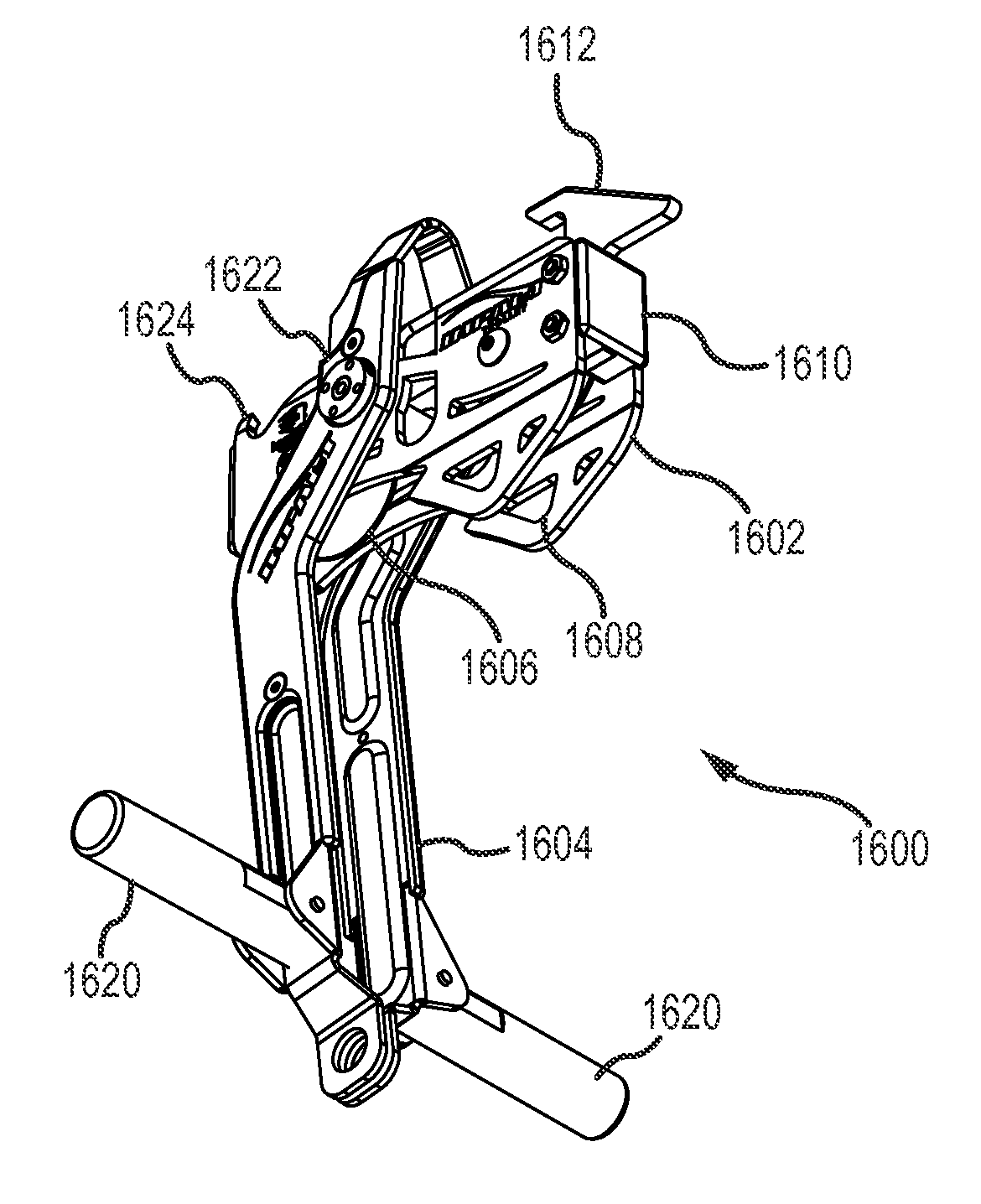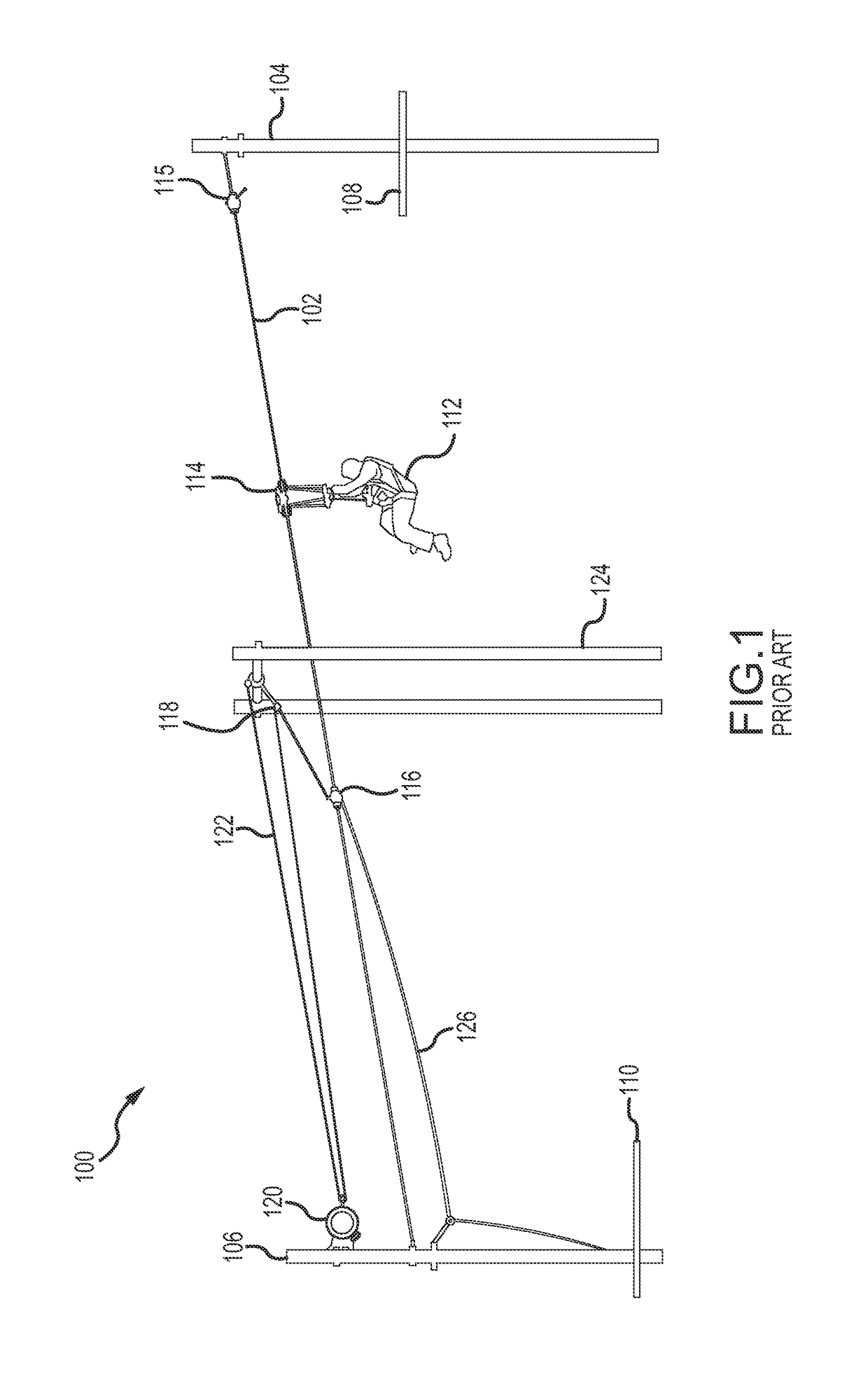Cable-traversing trolley adapted for use with impact braking
a trolley and cable technology, applied in the direction of brake systems, mechanical devices, transportation and packaging, etc., can solve the problems of trolley damage, much greater danger and risk to participants, and damage to loads
- Summary
- Abstract
- Description
- Claims
- Application Information
AI Technical Summary
Benefits of technology
Problems solved by technology
Method used
Image
Examples
second embodiment
[0055]FIG. 13 illustrates a rider trolley 1300 with a slotted side plate 1304 having a single load-bearing sheave 1302 above the zip-line 1308 and a counter-balancing, load-bearing sheave 1320 below the zip line. This embodiment has a slightly modified slot 1330 configuration and different side plate structural supports 1340, among other things as shown in the FIG.
[0056]FIG. 14 illustrates an embodiment of a rider trolley 1400 with a slotted side plate 1404 having a single load-bearing sheave above the zip-line 1408 and a counter-balancing, load-bearing sheave 1420 below the zip line, further provided with a T-handle 1450 for use by a rider. In the embodiment shown, the T-handle 1450 is attached adjacent to the lower load-bearing sheave 1420. The T-handle 1450 may be fixed to the trolley 1400 (as shown) or may be provided with a rotating pivot in order to allow some swing to the T-handle. In the embodiment shown, in addition to the anchor point 1406 a secondary anchor point 1407 may...
embodiment 1600
[0059]FIGS. 16A-D illustrates another embodiment of a rider trolley with a pivoting handle. In the embodiment 1600 shown, a trolley portion 1602 is pivotably attached to a handle and arm assembly 1604. The rider trolley 1602 is illustrated as having two sheaves 1606 in a trolley housing that includes side plates and anchor points 1608, as well as other components discussed in greater detail above. The housing may be made of any suitable material such as metal, carbon fiber or plastic. The housing may further be painted or anodized to improve the appearance or to provide protection against wear or the elements.
[0060]The housing is further provided with an impact surface 1610. A bumper or other shock absorbing device (not shown) may be attached to the impact surface 1610 to provide for a softer impact on the brake. The impact surface 1610 provides a greater surface area for engagement with the brake, which decreases the wear on both the brake and the trolley 1600. Furthermore, by plac...
PUM
 Login to View More
Login to View More Abstract
Description
Claims
Application Information
 Login to View More
Login to View More - R&D
- Intellectual Property
- Life Sciences
- Materials
- Tech Scout
- Unparalleled Data Quality
- Higher Quality Content
- 60% Fewer Hallucinations
Browse by: Latest US Patents, China's latest patents, Technical Efficacy Thesaurus, Application Domain, Technology Topic, Popular Technical Reports.
© 2025 PatSnap. All rights reserved.Legal|Privacy policy|Modern Slavery Act Transparency Statement|Sitemap|About US| Contact US: help@patsnap.com



